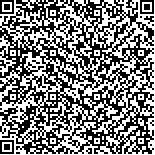| 引用本文: | 杨梦煊,王宝杰,刘梅,蒋克勇,仲晨,王雷.盐度胁迫下凡纳滨对虾体内虾青素在着色与抗氧化的资源权衡[J].海洋科学,2023,47(10):32-42. |
| |
|
| |
|
|
| 本文已被:浏览 333次 下载 481次 |

码上扫一扫! |
|
|
| 盐度胁迫下凡纳滨对虾体内虾青素在着色与抗氧化的资源权衡 |
|
杨梦煊1,2, 王宝杰1,3, 刘梅4, 蒋克勇1,3, 仲晨4, 王雷1,3,2
|
|
1.中国科学院海洋研究所 中国科学院实验海洋生物学重点实验室, 山东 青岛 266071;2.中国科学院大学, 北京 100049;3.中国科学院 海洋大科学中心, 山东 青岛 266071;4.山东省海洋科学研究院 青岛市水产生物品质评价与利用工程研究中心, 山东 青岛 266104
|
|
| 摘要: |
| 工厂化养殖中产生的环境压力,会导致对虾应激反应的发生以及体色的减弱。为了探究胁迫下对虾体内虾青素的消耗规律以及对虾的着色与抗氧化之间的关联性,本研究通过虾青素强化后盐度胁迫的方法进行了实验。结果表明,与强化前相比,虾青素强化后植物源(夏侧金盏花)虾青素(d-AST)、合成虾青素(p-AST)处理的对虾肝胰腺中虾青素含量分别增加48.0%和17.5%;虾壳中分别增加42.8%和45.2%。富含酯化型虾青素的d-AST在肝胰腺中具有更高的沉积量;而由游离虾青素组成的p-AST在虾壳中具有更高的沉积量,不同形式的虾青素在不同组织中的沉积具有一定的偏好性。两个处理组对虾的体色明显增强。与盐度胁迫前相比,胁迫后d-AST、p-AST肝胰腺中虾青素含量分别减少了15.1%和5.7%,对照组(Ctrl)含量无变化;虾壳中分别减少了17.8%、52.9%和14.3%,各组对虾的体色均显著减弱。胁迫24 h检测到编码虾青素转运蛋白β-1,3-葡聚糖结合蛋白(βGBP-HDL)基因的显著上调表达,可能与虾壳中虾青素的减少有关。随着胁迫的进行,与对照组相比,两个处理组的抗氧化基因均呈现上调表达的趋势;各组抗氧化能力呈现先上升后下降的趋势,并在48 h时达到最大值,d-AST、p-AST分别为对照组的1.35和1.30倍。据此,作者推测对虾体内的虾青素是按照资源权衡的原则在着色和抗氧化功能中进行分配的,在遭受环境胁迫时,对虾会优先将用于着色部分的虾青素(虾壳中)转运至肝胰腺中参与抗氧化,进而表现为体色的减弱和抗氧化能力的上升。 |
| 关键词: 凡纳滨对虾(Litopenaeus vannamei) 虾青素 体色 抗氧化 |
| DOI:10.11759/hykx20230412001 |
| 分类号:S963.14 |
| 基金项目:国家自然科学基金项目(NSFC-山东联合基金)(U1706209);黄河三角洲产业领军人才项目;山东省海洋科学研究院科研补助经费 |
|
| Resource tradeoff between coloring and antioxidation of astaxanthin in Litopenaeus vannamei under salinity stress |
|
YANG Meng-xuan1,2, WANG Bao-jie1,3, LIU Mei4, JIANG Ke-yong1,3, ZHONG Chen4, WANG Lei1,3,2
|
|
1.CAS and Shandong Province Key Laboratory of Experimental Marine Biology, Institute of Oceanology, Chinese Academy of Sciences, Qingdao 266071, China;2.University of Chinese Academy of Sciences, Beijing 100049, China;3.Center for Ocean Mega-Science, Chinese Academy of Sciences, Qingdao 266071, China;4.Aquatic Organisms Quality Evaluation and Utilization Engineering Research Center, Marine Science Research Institute of Shandong Province, Qingdao 266104, China
|
| Abstract: |
| The environmental pressure generated by industrial culture causes stress and weakening of the body color of the shrimp. Our results show that astaxanthin (d-AST) and synthetic astaxanthin (p-AST) contents in the hepatopancreas of shrimps treated with astaxanthin increased by 48.0% and 17.5%, respectively, compared with those who were not treated with any form of astaxanthin. Astaxanthin content in shrimp shells increased by 42.8% and 45.2%, respectively. d-AST rich in esterified astaxanthin was deposited in high amounts in the hepatopancreas, whereas p-AST composed of free astaxanthin was deposited in high amounts in the shell. Different tissues had preferences for different forms of astaxanthin. The body color of shrimps in the two treatment groups was significantly enhanced. Astaxanthin content in hepatopancreas of d-AST and p-AST decreased by 15.1% and 5.7% after applying salinity stress, respectively, whereas its content in the control group remained unchanged. Astaxanthin content in shrimp shells of d-AST, p-AST and control group significantly decreased by 17.8%, 52.9%, and 14.3%, respectively. The expression of the gene encoding the astaxanthin transporter β-1, 3-glucan-binding protein (βGBP-HDL) was significantly upregulated after 24 h of stress, which may reduce astaxanthin content in the shrimp shell. A simultaneous upregulation in the expression of antioxidant genes with the progression of stress was observed in the two treatment groups compared with the control group. The antioxidant capacity of the groups increased, subsequently decreased, and finally reached the maximum value at 48 h. At 48 h, d-AST and p-AST were 1.35 and 1.30 times that of the control group, respectively. Therefore, we speculate that astaxanthin content in shrimp affects pigmentation and antioxidant functions according to the resource balance principle. Under environmental stress conditions, astaxanthin used for pigmentation (shrimp shell) is preferentially transported to the hepatopancreas to participate in antioxidation, which weakens body color and increases antioxidant capacity. |
| Key words: Litopenaeus vannamei astaxanthin body color antioxidation |
|
|
|
|
|
|
